Svaneti, also known as Suania, is a highland region with a rich history located in the northern part of Georgia. The remote Svaneti plateau stretches across a wide expanse of snow-capped peaks and fir canyons. It is known as the home of the Svans, an ethnic group with significant geographical diversity within the country.
Svaneti is surrounded by towering mountains with an average elevation ranging from 3,000 to 5,000 meters above sea level. It is also the highest inhabited area in Georgia. Among the surrounding peaks, the tallest is Mount Shkhara, rising to an impressive height of 5,201 meters.
Connected by a series of small medieval villages, this region is renowned for its distinct highland culture, mysterious folk customs, and ancient local dialects. Nothing represents the Svaneti plateau better than the hundreds of “koshkebi” – medieval watchtowers, scattered throughout the mountains.
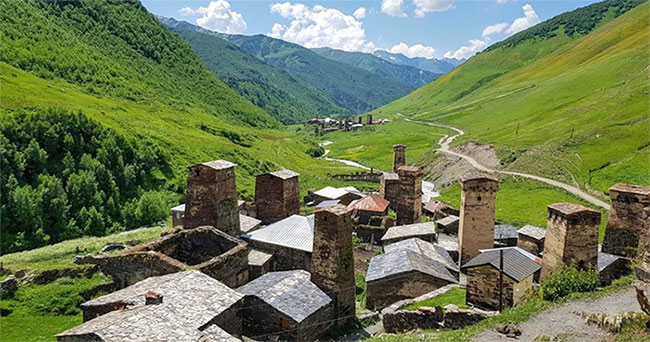
“Koshkebi” – medieval watchtowers scattered throughout the mountains. (Photo: CNN).
A Natural Paradise
The landscape of Svaneti is dominated by mountains separated by deep gorges. Most of the area, situated at an elevation of 1,800 meters above sea level, is covered by mixed and coniferous forests.
The forest is enveloped by species such as fir, Nordmann fir, oak, larch, and yew.
Less common species, yet still found in certain areas, include chestnut, birch, maple, Scots pine, and sweetgum.
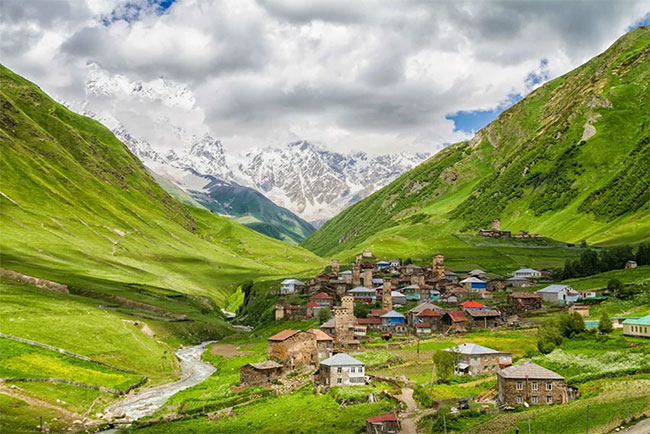
Svaneti is known as a natural paradise. (Photo: CNN).
Thanks to its rugged terrain and extreme isolation, Svaneti is a dream destination for many explorers. The summer in the high mountains of Svaneti attracts those eager to conquer trails through ancient villages, offering spectacular views of crumbling churches, flower-filled meadows, and the expansive borders of the Caucasus Mountains.
Among these villages is Adishi, a small, quiet refuge, and Ushguli, a cluster of villages lying in the shadow of the majestic Mount Shkhara. Ushguli has hardly changed since its establishment in the 12th century, with the shouts of young men racing horses adding vibrancy to the village atmosphere.
On a solitary hill in Ushguli stands Lamaria, a modest Orthodox Christian church built in the 10th century, named after the ancient Svan goddess.
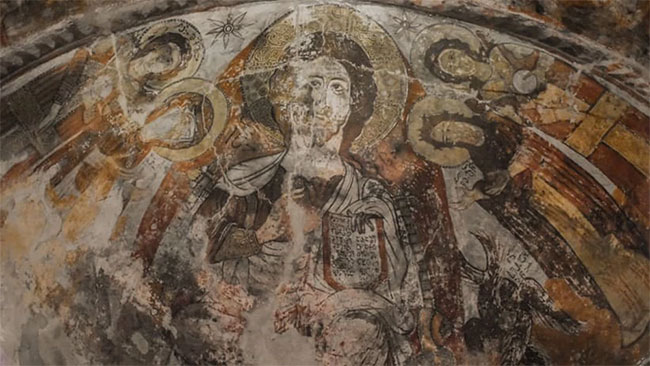
The Orthodox Christian church Lamaria, built in the 10th century. (Photo: CNN).
A Diverse Culture
“Khocha ladagh” is a local blessing for a good day.
Situated in the wilderness among the mountains for centuries, the Svans have avoided many conquests and wars that ravaged the lowlands of Georgia.
The isolation of Svaneti throughout history has endowed this land with a unique culture and language, much like its landscape.
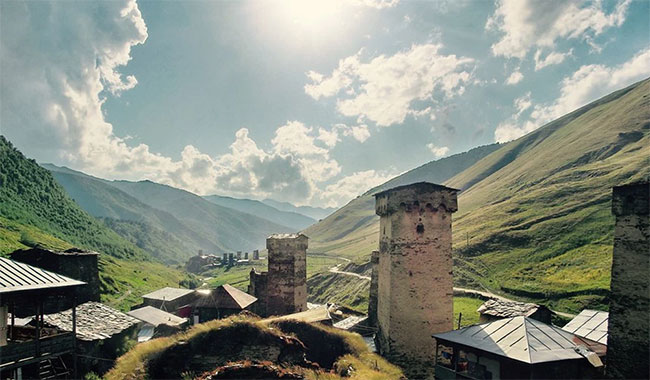
Svaneti, an isolated highland region. (Photo: CNN).
While the local language is at risk of extinction, the multi-part hymns of the plateau are preserved in amber stone.
Men dressed in “chokhas”, traditional pomegranate-colored coats with embossed daggers hanging at their waists, often gather to sing the melodies of folk tales and rituals of the indigenous Svan people.
This folk music originates from the unique religious culture of the region, such as “Kvirikoba”, an annual pilgrimage of Orthodox Christian believers to Saint Kvirike – a historic church from the 11th century located on a high hill above the village of Kala. Such traditions have ancient roots. Throughout history, the entire Svaneti plateau has been a hiding place for relics and treasures brought back from the plains during wartime for safekeeping.
Hundreds of medieval towers, “koshkebi”, over a thousand years old, make Svaneti resemble a Tolkien epic more than a highland region existing amid modern Europe. The wilderness of Svaneti could never be fortified by a simple defensive wall.
In their time, these towers served as a warning to invaders and as homes for entire families. Many towers still stand tall in the small village of Chazhashi, which boasts around 200 towers.
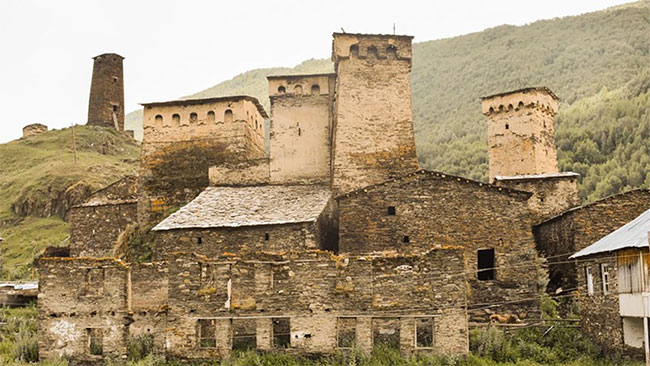
“Koshkebi” – medieval watchtowers showcasing the strength of the local people. (Photo: CNN).
Ten weeks before Easter, during the dark and eerily quiet twilight of February, men often carry torches to a cemetery in the village. They partake in a lavish dinner, toasting with the deceased and singing sacred hymns, dancing in a circle around the campfire.
The feast is illuminated by torches made from dry birch, accompanied by homemade wine and plates of bread inlaid with beeswax on the dining table.
This event marks the beginning of “Lamproba”, an annual ritual of the local people to pray for a bountiful spring while honoring the memory of the departed.
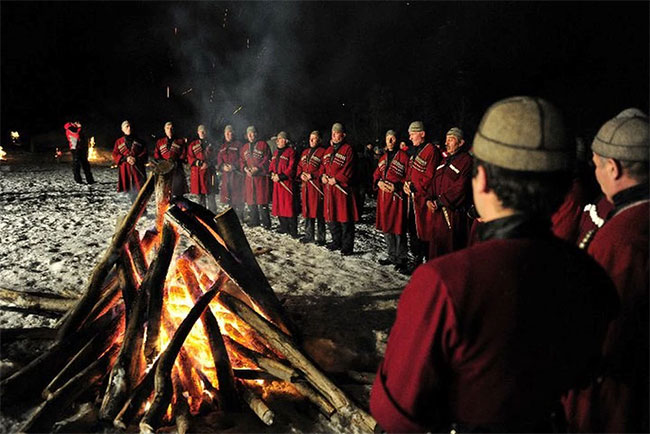
“Lamproba”, an annual ritual of the local people. (Photo: georgiaabout).
Highland Cuisine
One could argue that the backbone of Svaneti’s highland culture is its cuisine – rich, distinctive, and soothing. In a small parish school on a rural road in Latali, women in long skirts stand before grinding stones as the fragrant aromas of caraway, coriander, and garlic fill the air.
They are making Svanuri marili, also known as Svan salt, using the traditional method, grinding together all seven spices: salt, coriander, green curry, crushed red pepper, dill, marigold petals, and wild Persian cumin seeds.
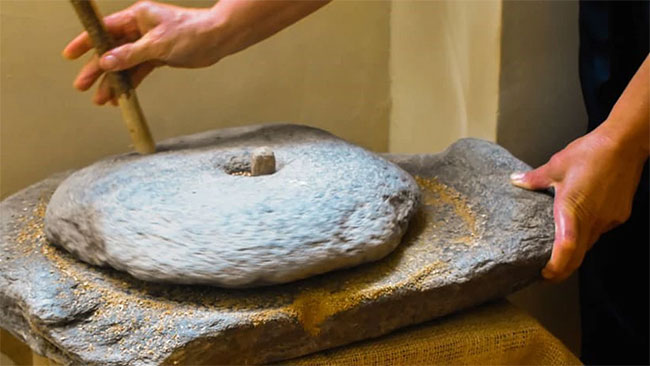
Svanuri marili, also known as Svan salt. (Photo: CNN).
Born out of the need to enhance salt reserves, Svanuri marili quickly became a staple in Svaneti and Georgia as a whole. This salt is typically packaged in small plastic bags and is sold throughout the plateau, widely used in all types of food among the Svans and Georgians.
Local favorites include “tashmijabi”, a dish made from hot potatoes wrapped with cheese until the mixture becomes extremely stretchy and sticky.
Even more popular is “kubdari” – a soft baked bread stuffed with beef, stewed onions, and spices.
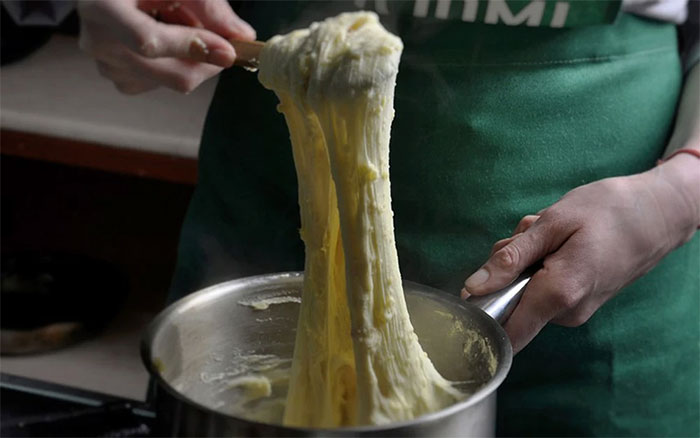
“Tashmijabi” – a signature dish beloved by locals. (Photo: Borjomi).
Additionally, “fetviani”, a flatbread topped with salty mountain cheese and green millet, or “chvishtari”, a crispy corn bread stuffed with cheese pieces, are distinctive culinary traditions of the highland region of Svaneti.


















































